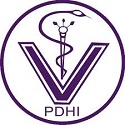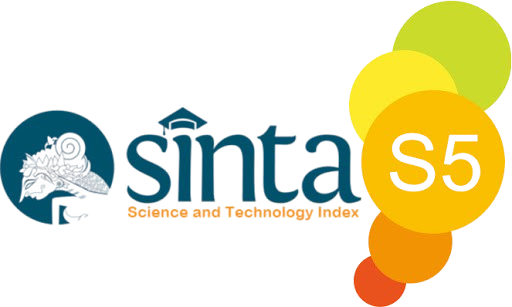User Menu
Author Guidelines
Author Guidelines
Penulis diminta untuk mengirimkan naskah secara elektronik online melalui https://e-journal.undikma.ac.id/index.php/mvj/login .Â
Pastikan naskah Anda berisi tujuan yang sesuai dengan MVJ. Silakan baca Focus & Scope ( https://e-journal.undikma.ac.id/index.php/mvj/about/editorialPolicies#focusAndScope ) jurnal. Naskah di luar ruang lingkup akan dikembalikan kepada penulis sebelum proses peninjauan.
Naskah harus disiapkan menggunakan Microsoft Words. Berikan gambar dalam format JPEG dan pertahankan minimal 300 dpi. Jika menggunakan perangkat lunak Microsoft untuk memproses gambar, biarkan semua tanda dan simbol dikelompokkan ke gambar. Gambar dan tabel disusun menurut template JSV ( https://drive.google.com/file/d/1vKPhhJxsEMRG-PlvrOvpGdgV88tncCVZ/view?usp=sharing ) dan diberi nomor secara berurutan. Pastikan semua gambar dan tabel memiliki keterangan yang dilampirkan pada gambar / tabel. Judul harus terdiri dari judul singkat dan deskripsi lengkap dari gambar / tabel termasuk semua simbol dan singkatan yang digunakan.
Panjang total naskah tidak lebih dari 20 halaman ukuran kertas A4 pada satu baris spasi.
 A. Struktur Artikel
1. Judul
Must be concise and informative, written in Bahasa Indonesia and English, no more than 20 words (10-20 words)
2. Author's identity
Contains the full name of each authors and check their names are accurately spelled. The authors’ affiliation is indicated with a lower-case superscript letter immediately after the authors’ name and in front of the institution’s addresses (full postal address including the country name).
Corresponding author
Clearly indicate the corresponding author and provide the e-mail address in the manuscript according to template. Ensure that the given e-mail address (phone number and fax) is valid and kept up date by the corresponding author.
 3. Abstract
Written in Bahasa Indonesia and English consisting of a maximum of 250 words with a maximum of 5 keywords. The abstract is prepared in single space of a single paragraph.
4. Introduction
Contains background that contains the importance and purpose of the research, and the benefits of the research that has been done.
5. Materials and Methods
Written without material and method subtitle. Materials and equipment are described on behalf of the manufacturer, chemical name and trade name. The methodology of the study is written briefly and accompanied with selected analysis.
6. Results and Discussion
The results are described sequentially, detailed and clear. The result is discussed in a scientific and rational manner supported with relevant scientific references.
7. Conclusions
The conclusions of the research results are stated briefly, solidly and clearly.
8. Acknowledgements
Only listed individuals and institutions which was truly assist the research.
9. How to Cite
Reference citation is done by writing down the name of the primary author and the year of publication. Use connecting words ‘and’ for 2 authors and ‘et al’ for 3 or more authors depending on the language of the original article used. Please follow the article template provided.
10. References
Sorted alphabetically and journal abbreviation is in accordance to internationally recognised rules i.e. ISI, CAS Core Journal Abbreviations. Cited literatures should not older than 10 years and book is limited to a maximum of 20% of the full bibliography.
Journal:
Ning, Z.Y., Wu, X.T., Cheng, Y.F, Qi, W.B., An, Y.F., Wang, H., Zhang, G.H. And Li, S.J. (2012) Tissue distribution of sialic acid-linked influenza virus receptors in beagle dogs. J. Vet. Sci. 13: 219-222.
Haryanto, A., Ernawati, R., Wati, V., Irianingsih, S.H. And Wijayanti, N. (2016). Analysis of viral protein-2 encoding gene of avian encephalomyelitis virus from field specimens in Central Java region, Indonesia. Vet. World. 9 (1): 25-31.
Book:
Thrusfield, M. (2007). Veterinary Epidemiology 3rd ed. Blackwell Science. Ames.Iowa. USA: 101-103.
Alisson, E. A. (2011). Fundamental Molecular Biology 2nd revised ed. John Wiley and Son Inc. (Verlag). Germany: 189-202.
Chapter in book:
Gavin, R., Merino, S. and Tomas, J.M. (2004) Molecular Mechanism of Interaction Between Aeromonas hydrophyla and Hosts. In: Current Trends in the Study of Bacterial and Viral Fish and Shrimp Diseases. Vol.3. Yin, L.K. World Scientific Publishing Co. Pte. Ltd. Singapore. 117-144
Thesis / Thesis / Dissertation:
Purwaningrum, M. (2014). Determination of Newcastle Disease virus virus isolates locally on poultry by RT-PCR and REA methods. Thesis. Veterinary Science Program. Faculty of Veterinary Medicine, Gadjah Mada University, Yogyakarta.
Sitasiwi, A.J. (2015). The cloning and gene expression of the WingLink-type MMTV integration site family member-4 mice as antigen candidates for wildlife imperial imuno. Dissertation. Veterinary Science Program. Faculty of Veterinary Medicine, Gadjah Mada University, Yogyakarta.
Website:
Gorman, C., 1997. The New Hongkong Flu. Â Http://www.time.com/time/magazine/article/0,9171,987603,00.html. Retrieved on July 28, 2008.
B. Short Communication (short communication) and Field/ Clinical Case Studies
Manuscripts written at least 3 and a maximum of 7 pages are included Images and Tables
Penyusunan naskah untuk: Judul dan Identitas Penulis sesuai dengan persyaratan pada butir A (Naskah Hasil Penelitian).
Abstrak: Terdiri dari minimal 100 kata dan maksimal 250 kata
Susunan naskah meliputi: Abstrak, Pendahuluan, Materi dan Metode, Hasil dan Pembahasan, Kesimpulan, Ucapan Terima Kasih dan Daft




